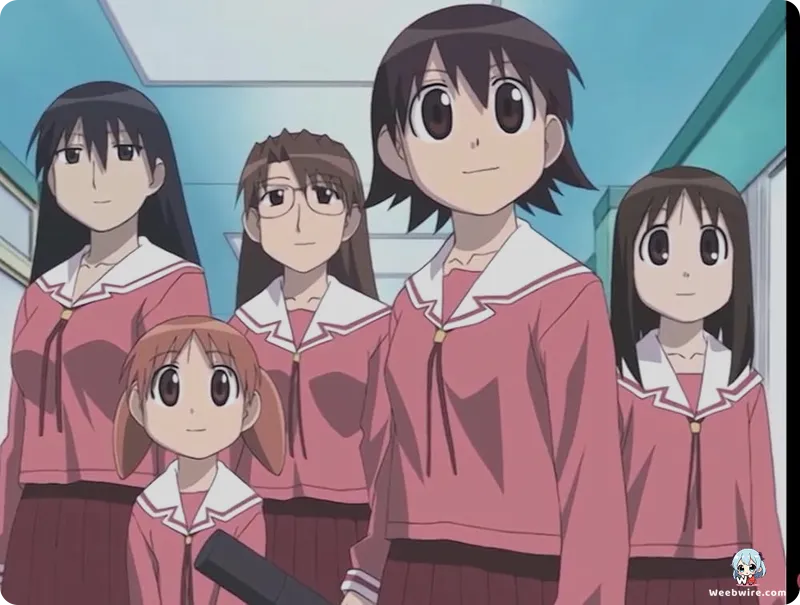Azumanga Daioh's Enduring Legacy: Unpacking the Quirky Genius of Anime's Slice-of-Life Pioneer

Two decades after its debut, Azumanga Daioh continues to stand as a monumental achievement in the slice-of-life comedy anime genre. Released in 2002 by J.C.STAFF, this brilliant adaptation of Kiyohiko Azuma's renowned 4-panel manga didn't just entertain; it redefined comedic storytelling in animation. Its unique blend of humor, an ensemble of unforgettable characters, and a bold departure from traditional narrative structures captivated audiences globally, cementing its legendary status.
Beyond the surface-level hilarity, a deeper exploration reveals the ingenious craft behind its enduring appeal. Azumanga Daioh originated as a yonkoma, or 4-panel comic strip, a format inherently challenging to translate into a fluid animated series. J.C.STAFF’s masterstroke was to embrace this episodic, vignette-driven nature, transforming potential disjointedness into a signature style. Each episode unfolds as a series of rapid-fire, often unconnected, comedic sketches that perfectly mirror the punchline-driven rhythm of its source material. This innovative approach ensures a dynamic pace, keeping viewers thoroughly entertained without the need for a complex overarching plot.
Unforgettable Characters
At the heart of its charm is Chiyo Mihama, the precocious 10-year-old prodigy who navigates high school life alongside classmates years her senior. Her innocent, often naive perspective creates a delightful comedic foil against the eccentricities of her peers and teachers. Interestingly, the manga's initial serialization in Dengeki Daioh magazine, primarily targeting a male demographic, achieved immense popularity, a testament to Azuma's universal comedic genius.
Adding to the eclectic mix is Ayumu Kasuga, affectionately known as "Osaka." Despite originating from Osaka, her nickname stems from a perceived embodiment of regional stereotypes, though she rarely speaks in a full Kansai dialect. Osaka is a wellspring of profound, yet utterly nonsensical, philosophical musings and daydreams that frequently steer classroom discussions into hilariously absurd tangents. Her intense curiosity about the mundane, exemplified by her pursuit of a "cat-ear-removing machine," became a beloved running gag that underscored the series' celebration of the bizarre.
Then there's Sakaki, the towering, athletic, and seemingly stoic girl who secretly yearns for cute animals, especially cats. This endearing contrast between her cool exterior and her internal desire to cuddle every feline she encounters a desire often thwarted by their biting hands provides some of the series' most heartwarming and humorous moments. The eventual acceptance of her affection by Maya, an Iriomote cat, marks a significant emotional payoff within the comedic framework.

Even the supporting cast contributes to its distinctive flavor. Mr. Kimura, the highly controversial and overtly perverted English teacher, remains a character of dark humor that, while divisive, became an unforgettable part of the show. His bizarre explanations for his career choice and open admiration for his wife add layers of peculiar charm. Similarly, Kaorin’s intense, unrequited crush on Sakaki provides a recurring, albeit often one-sided, romantic subplot that enriches the ensemble's dynamics.
Enduring Legacy and Influence
The distinctive sound design of Azumanga Daioh is another hallmark, with the iconic "bonk" sound effect instantly recognizable and integral to its physical comedy and unique timing.
Furthermore, the series played a pivotal role in popularizing the "cute girls doing cute things" (CGDCT) subgenre. While not the first, Azumanga Daioh refined many of the tropes and narrative techniques that would later become genre standards, demonstrating how everyday school life, filtered through absurd humor and endearing characters, could be endlessly entertaining. Its opening theme, "Soramimi Cake," and ending theme, "Raspberry Heaven," are cult classics, celebrated for their catchy melodies and quirky visuals that perfectly encapsulate the show's whimsical spirit.
Ultimately, Azumanga Daioh transcends mere comedy; it is a cultural touchstone that reshaped the landscape of slice-of-life anime. Its unwavering commitment to celebrating the mundane, the absurd, and the genuinely heartfelt moments of high school life, all masterfully presented through its innovative yonkoma adaptation, secures its place as a timeless classic that continues to delight new generations of anime enthusiasts.
Credits
Azumanga Daioh
Author
Kiyohiko Azuma
Cover Art
Kiyohiko Azuma
Studio
J.C.STAFF
Publisher
MediaWorks
Producers





